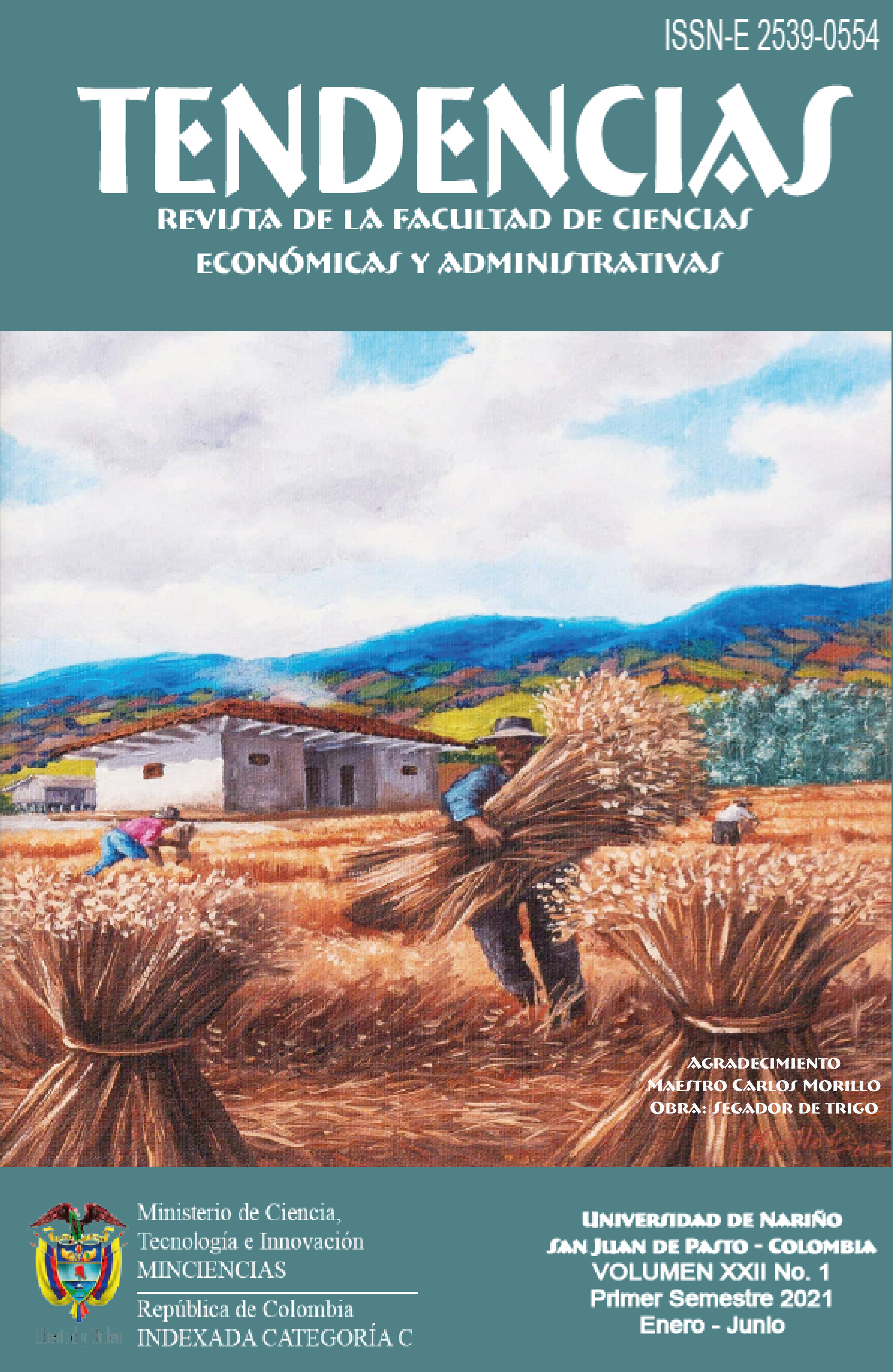The tourist competitiveness. An approach from the Department of Boyacá, Colombia
DOI:
https://doi.org/10.22267/rtend.202102.162Keywords:
competition, performance, strategy, productivity, tourismAbstract
Tourism is a strong economic sector in the world economy that generates significant economic benefits for countries. This article is the result of research carried out by ``Group CERES``. The objective of the research focused on reviewing different models of tourist competitiveness and implementing them in the Province of Sugamuxi, the focus of the research. To reach the objectives, a qualitative methodology was proposed with a method of documentary analysis to highlight the most relevant studies and competitiveness models for implementation; what generated the application of the Crouch and Ritchie (1999) model; the most impactful factors for the region were identified. The results show the strengths such as the type of natural tourism that is generated and within the weaknesses the lack of association on the part of the actors involved in the tourism sector, finding infrastructure, information, organization and market ties, these weaknesses have to be improved as the tourism sector is projecting itself as world class.
Downloads
References
(1) Alberca, P. y Parte, L. (2013). Evaluación de la eficiencia y la productividad en el sector hotelero español: un análisis regional. Investigaciones Europeas de Dirección y Economía de la Empresa, 19(2), 102-111. https://doi.org/10.1016/j.iedee.2012.10.004
(2) Andrades, L., Sánchez, M., & Pulido, J. (2014). Tourism destination competitiveness from a demand point of view: an empirical analysis for Andalusia. Tourism Analysis, 19(4), 425-440.
(3) Bagarić, L., & Žitinić, D. (2013). Competitiveness of kvarner region: challenges for destination management and branding. Tourism and Hospitality Management, 19(2), 217-231.
(4) Berki, M., & Gonda, T. (2006). Positioning of urban scenes of cultural tourism in Hungary. Foldrajzi Ertesito, 55(1-2), 127-140.
(5) Bolaky, B. (2011). La competitividad del turismo en el Caribe. http://repositorio.cepal.org//handle/11362/11459
(6) Cámara de Comercio de Sogamoso. (2017). Diseño de producto turístico para la Provincia de Sugamuxi. https://camarasogamoso.org/diseno-de-producto-turistico-para-la-provincia-de-sugamuxi/
(7) Castellanos, C., Hernández, Y., Castellanos, J. y Campos, L. (2014). La competitividad del destino turístico Villa Clara, Cuba: Identificación de sus factores determinantes mediante análisis estructural (MIC-MAC). Estudios y Perspectivas en Turismo, 23(2), 250-277.
(8) Chen, W. J. (2013). Factors influencing internal service quality at international tourist hotels. International Journal of Hospitality Management, 35, 152-160. https://doi.org/10.1016/j.ijhm.2013.06.004
(9) Consejo Nacional de Política Económica y Social [CONPES]. (2008). Documento Conpes 3527 - Política Nacional de Competitividad y Productividad. https://colaboracion.dnp.gov.co/CDT/Conpes/Econ%C3%B3micos/3527.pdf
(10) Consejo Privado de Competitividad. (2019). Informe Nacional de Competitividad 2018-2019. https://compite.com.co/wp-content/uploads/2018/10/CPC_INC_2018-2019_Web.pdf
(11) Crouch, G., & Ritchie, R. (1999). Tourism, competitiveness and societal prosperity. Journal of Business Research, (44), 137-152.
(12) Firgo, M., & Fritz, O. (2017). Does Having the Right Visitor Mix Do the Job? Applying an Econometric Shift-Share Model to Regional Tourism Developments. The Annals of Regional Science, 58, 469-490. https://doi.org/10.1007/s00168-016-0803-4
(13) Gobernación de Boyacá. (2020). Secretaría de Turismo. https://www.boyaca.gov.co/Secretaríaturismo/
(14) Guzmán, F. A., Cuervo, H. A. e Ibarra, A. (2016). La innovación en el sector turismo como ventaja comparativa entre los países GEM de la Alianza del Pacífico. Revista ESPACIOS, 37(8), 21. http://www.revistaespacios.com/a16v37n08/16370822.html
(15) Ibáñez, R. (2011). Diagnóstico de la calidad y competitividad del sector turístico en México. Cuadernos de Turismo, (28), 121-143. http://uaemex.redalyc.org/articulo.oa?id=39821278007
(16) Kozak, M. & Andreu, L. (Eds.). (2006). Progress in tourism marketing. Routledge. https://doi.org/10.4324/9780080480480
(17) Lall, S. (2001). Competitiveness Indices and Developing Countries: An Economic Evaluation of the Global Competitiveness Report. World Development, 29(9), 1501-1525.
(18) Ministerio de Comercio, Industria y Turismo [MinCIT]. (2014). Norma Técnica NTS-TS Sectorial Colombiana 002 Establecimientos de Alojamiento y Hospedaje (EAH) Requisitos de sostenibilidad. https://www.mincit.gov.co/CMSPages/GetFile.aspx?guid=f200f357-97f9-408a-a2c1-07e1a929c1fc
(19) Narváez, M. y Fernández, G. (2009). Indicadores de competitividad para destinos turísticos en el marco de la sostenibilidad: un análisis aplicado a La Península de Paraguaná. Revista Venezolana de Análisis de Coyuntura, 15(2), 101-119. http://www.redalyc.org/articulo.oa?id=36412216007
(20) Ochoa, E. A. (2015). Determinantes de la competitividad de un destino turístico: caso Villa de Leyva. Visión Empresarial, 1(1), 30-48. https://doi.org/10.24267/24629898.91
(21) Organización Mundial de Turismo [OMT]. (2018). Panorama OMT del turismo internacional. UNWTO. https://doi.org/10.18111/9789284419883
(22) Polanco, J. (2011). Determinantes de un sistema organizacional en red para el desarrollo rural del turismo en Antioquia (Colombia). Cuadernos de Desarrollo Rural, 8(67), 251-274. http://www.scielo.org.co/scielo.php?script=sci_arttext&pid=S0122-14502011000200011&lng=en&tlng=es
(23) Porter, M. (2015). Ventaja Competitiva: Creación y sostenimiento de un desempeño superior. Grupo Editorial Patria.
(24) Pulido, J. y Sánchez, M. (2010). Competitividad versus crecimiento en destinos turísticos. Un análisis mediante técnicas multivariantes. Cuadernos de Economía, 33(91),159-181. https://doi.org/10.1016/S0210-0266(10)70061-3
(25) Ritchie, B., & Crouch, G. (2003). The competitive destination: A sustainable tourism perspective. CABI.
(26) Schwab, K. (Ed.). (2018). The Global Competitiveness Report 2018. World Economic Forum. http://www3.weforum.org/docs/GCR2018/05FullReport/TheGlobalCompetitivenessReport2018.pdf
(27) Secretaría de Turismo de la Gobernación de Boyacá. (2018). Sistema de Información Turística de Boyacá SITUR. https://situr.boyaca.gov.co/
(28) Urrutia, J. y Cuevas, T. (2016). Redes empresariales en el sector turismo y servicios para la mejora de competitividad en Ciudad Juárez, Chihuahua, México: caso Parque Central Hermanos Escobar y PYMES aledañas. Cuadernos de Turismo,
(37), 421-436. https://doi.org/10.6018/turismo.37.256331
(29) Zuñiga, A, y Castillo, M. (2012). Turismo en Colombia: resultados del sector (2007-2010). Magazín Empresarial, 8(15), 67-73.
Published
How to Cite
Issue
Section
License
Those authors who have publications with this journal, accept the following terms:
This journal is licensed under a Creative Commons Reconocimiento-NoComercial 4.0 Internacional License. The articles can be copied, distributed, adapted and communicated publicly, as long as the credits of the work are recognized and the respective source is quoted. This work can not be used for commercial purposes.
To increase their visibility, documents are sent to databases and indexing systems.
The content of the items is the responsibility of each author, and does not compromise in any way, journal or institution.







































